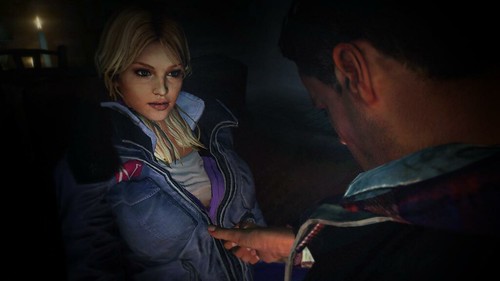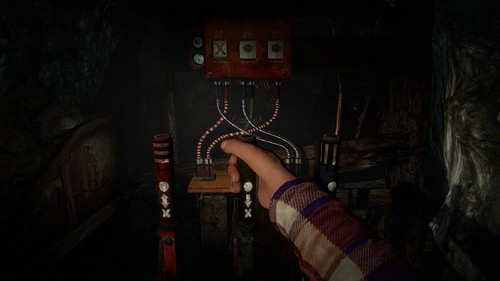Last month’s debut of PlayStation Move-based horror game Until Dawn generated enough intrigue to propel the game onto at least one news site’s best of gamescom list (LINK: http://www.t3.com/features/best-of-gamescom). And after watching a 30-minute gameplay demonstration of this cheeky horror game at gamescom, it wasn’t hard to see why. The game oozes confidence and style: its immersive use of the PlayStation Move motion controller (from flipping levers to tugging zippers), rapid-fire banter, and unabashed reliance on genre tropes all point to a game that’s determined to push horror gaming into uncharted territory.
It’s important to note that Until Dawn is firmly a teen horror game, trading in the healing herbs and bullet counting of the survival-horror genre for quips, jump scares, and salacious scenarios that wouldn’t seem out of place in Friday the 13th or I Know What You Did Last Summer.
After Until Dawn’s gamescom debut, I had a chance to speak with SuperMassive’s executive creative director Will Byles, who discussed the game’s genesis, HUD-free presentation, and adaptive storyline.
Sid Shuman, PlayStation.Blog Social Media Manager: Until Dawn got a great response at gamescom. What do you mean when you say it’s “unashamedly a teen horror”?
Will Byles, Executive Creative Director: Teen horror is where we started. It’s where you have a group of teenagers disappear off to some remote location. The power is usually out; the phone is always out. And then, one by one, they get killed off. And they’re always trying to get it on with each other, often at inappropriate times.
PSB: Until Dawn has no HUD at all – no onscreen button icons, no text. Why is that important?
WB: We think it’s massively important for two reasons. We wanted to make sure this game was fun to play, but also watchable — we wanted a couple or group of friends to sit down and those that weren’t playing would be really happy to watch the whole thing. It just seemed like a much better way of doing it.
Every time we put something on screen, it breaks your suspension of disbelief just a little bit. So we try to keep it to a minimum. We wanted to try and keep all the shocks and scares first-person, so they’re happening to the player, with as few abstract elements as possible.
PSB: Until Dawn’s use of PlayStation Move is fascinating and helps make it a very tactile game. When did you settle on Move, and why?
WB: The game was designed from the ground up for PS Move. We started off making a first-person teen horror game that was flashlight-based — everything you needed to do or navigate used the flashlight. And PS Move is perfect for that; it looks like a flashlight, it feels like a flashlight. The T button underneath it handles your walking speed. Then, when you’re interacting without the flashlight, we map the PS Move controller to what your hand would do.


PSB: Until Dawn’s story adapts to your play decisions, so this isn’t a linear game in the traditional sense. How many variations are possible?
WB: I don’t want to give too much away about the story, but we’ve got two things going on. The story adapts to what’s happening. A massive part of teen horror movies is people getting killed one by one; with our game, we want the fate of the character you’re playing is in your hands. Another thing: If you die in this game, you die. The story will change, adapt. There’s no reset or respawning — that’s it. You’re onto the next character.
During development, we did a lot of testing to make sure that there was a pacing to the fear. We did galvanic skin response (GSR) tests, which sounds quite technical, but it measures the conductivity of people’s skin — like a lie detector. Then the person would play the game, we would film them and see what’s onscreen, and we’d get this graph showing how frightened or relaxed they were. It’s quite interesting: The scene when Michael and Jessica are in the lodge and it starts to get amorous, we saw some interesting skin galavanic responses when some of the younger men were playing it. [laughter]
PSB: Heavy Rain is the last time we’ve seen this kind of branching story. Was Heavy Rain an influence for you at all?
WB: I think Heavy Rain is a great innovator in interactive narrative, [the team] is phenomenally good. David Cage is a great leader in that, so yeah, we definitely took some inspiration there.
PSB: The game seems to have a good sense of humor, such as that scene where you use PlayStation Move to begin disrobing your girlfriend.
WB: We keep coming back to the game being unashamedly a teen horror. If we didn’t do that stuff, I think that people would feel cheated. We’ve got to go there, we’ve got to do it. People see teen horror movies as date movies, and we’re trying to do the same thing here….To us, the three words of teen horror are scary-sexy-funny. Things like I Know What You Did Last Summer, Scream…on TV, Buffy or Supernatural. All of those have the same sort of feel — they’re teen horror.
